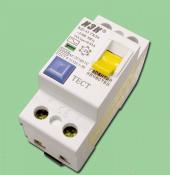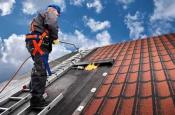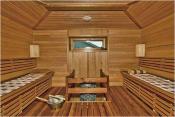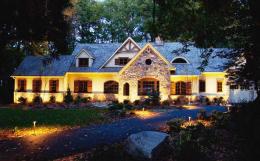Search
Login
Photocell, what is it, the use of photocells in a country house
The active use in everyday life of all kinds of modern electrical appliances, including those intended for lighting a private house and the area around it, leads to a significant increase in electricity consumption, and therefore to an increase in the cost of paying bills for electricity used. Quite naturally, the question arises of the need to save this resource. According to experts, the best assistant in solving this issue is a photocell for street lighting.
Content
- Do I need to include a photocell in the lighting system of the site
- The principle of operation of solar cells
- How to choose the right photocells
- How a vacuum photocell works
- Gate photocell
- Photocell for barrier video
- Nice photocells for outdoor installation video
- Photocell switch video
- Photocell Connection
- What are solar cells
Do I need to include a photocell in the lighting system of the site

The answer is unequivocal - its installation is necessary if you prefer to use all the benefits of modern civilization and at the same time spend your own money economically. Installing a photocell for street lighting will automate the process of turning the system on and off, depending on the time of day, the light intensity will be automatically adjusted. Installing a photocell will improve the efficiency of energy-saving measures.
The principle of operation of solar cells
The most important component of a photocell for street lighting is the photorelay: at the right time it works and drives the desired mechanism. The greatest saving effect can be obtained if the photo relay controls the operation of an energy-saving lighting device. There are different types of photocells on sale, differing in power and purpose. Installation of solar cells can be performed on the walls of structures or lampposts, for their placement does not require a lot of space.
How to choose the right photocells

To obtain savings on the purchase of the photocell itself, you should buy a model designed for the power consumed by the installed lamp. Often photocells are sold complete with lamps, but they can also be purchased as a separate product.
Before purchasing a photocell, you should calculate the estimated load and mode of operation, weather conditions and air humidity. These parameters will be the determining factors in the duration of the device and the quality of the lighting regulated by it.
How a vacuum photocell works

A vacuum photocell is a bulb, its inner surface is covered with a metal layer, very thin and having a small work function (anode). There is a small window in the bulb; light penetrates through it. In the center of the flask is a disk or loop that serves to receive photoelectrons. The anode is connected to the positive pole of the battery. Such a photocell is capable of responding to visible and infrared radiation.
When light enters the cathode, an electric current is generated, which in turn causes the relay to turn on or off. Many sighting machines have been created on the basis of vacuum photocells; they are successfully used in the subway, in automated sections of industrial enterprises, to reproduce sound from film.
Gate photocell

The main purpose of this kind of devices is to ensure safety, they are designed to avoid closing the shutters of automatic gates at a time when there is still a car or a person in the opening. It is hardly possible to believe that this is directly related to the prevention of injuries - this is most likely served by a photocell for the barrier - it is its arrow that lowers by inertia that can cause serious injury. Since the speed with which the shutters move does not exceed 20 cm per second, one does not have to particularly worry about the possibility of injuries. In addition, the engine power is usually limited by the control board; most models are equipped with an obstacle detection function. An automatic system can function quite normally with or without a photocell.

Nevertheless, given the affordable price of solar cells, only 20-30 dollars, experts recommend not to refuse to install them. The presence of the device will guarantee that when you turn on the automatic closing function, or accidentally press the button of this function on the remote control, the closing gates will not remember or will not scratch your car, because damage to the bumper or wing may require repair and painting, the cost of which will cost a hundred dollars.
Photocell for barrier

As we have already mentioned, the installation of a photocell for the barrier is an important issue, its presence can prevent injuries or damage to the car. For example, a Doorhan photocell for a barrier consists of an infrared transmitter and receiver, its main purpose is to prevent an emergency situation when foreign objects enter the territory they control. Its range is 25 m, the signal reception angle is 7 degrees. The principle of its operation is to stop or reverse the boom of the barrier, or the door leaf, in the event that any object enters the infrared beam.
Nice photocells for outdoor installation

The NICE F210 presence sensors have a similar operating principle and scope, they are synchronized photocells that rotate 210 horizontally and 30 vertically, some device models require connecting in the usual way, there are also wireless models. They are used in automatic door and gate systems; they are triggered when obstacles appear in the area between the receiver and the signal transmitter. Equipped with a BlueBUS system, all devices can be connected to the unit with just two wires. The connection is made in parallel, the addressing bridges are selected in accordance with the required automation function.
Photocell switch

The need for the installation of a photo relay of this kind is due to the need to turn on and off the lights, depending on the illumination of the territory of the site or the porch of the house, since the relay is connected with the onset of darkness, it is often called a twilight switch.

There are many schemes, allowing automation of the process of lighting the local area, both industrial and amateur. The main disadvantage of most of them is the need for an additional source of DC voltage of 12 V or the complexity of the circuits themselves.
Often problems arise when buying the cheapest photocells - their contacts burn out very quickly.

The functioning scheme of photocells-switches is very simple, it consists of three components: a photocell (photodiode, photoresistor or phototransistor), an output device (relay), and a threshold device called a comparator. Daylight does not cause an increase in the resistance of the photocell; the voltage on it is insufficient to exceed the threshold of the comparator. But with a decrease in the level of illumination, the resistance increases sharply, the voltage increases. When the voltage level reaches a critical level, the comparator is activated and turns on the lighting using a relay.
At first glance, it’s so simple, the circuit of the photocell switch can contain more than a dozen different parts, it can be greatly simplified using microcircuits. Simpler and more functional photocell circuits are created by integrating some of its components into others. For example, the very modern Quadrac circuit breaker is a triac with an integrated symmetrical dinistor acting as a threshold component.
Photocell Connection

Mounting a photocell is not a difficult task, the connection diagram is attached to the purchased device. A photocell consists of two components, one of which is a radiator, or in another way an infrared lamp, the other a signal receiver. A two-wire cable is used to connect the transmitter to the control board. In order to connect the receiving device, it will be necessary to provide it with power (two contacts will be involved) and signal transmission from the board, which will require two more contacts. The appearance of obstacles in the working area of \u200b\u200bthe device will lead to the breaking of the infrared beam and the supply of a negative signal to the board.
The photocells for the gate are connected using a stranded wire with a cross section of 0, 75 or 0.5 mm, its veins should be multi-colored, this will help to track the correct connection: for a transmitter - a two-wire wire, for a receiver - four-wire. It should be remembered that incorrectly connected wires can cause damage to photocells or even the board. It is not rational to use a thick stranded wire - it is not convenient to work with it, it is not included in standard connectors, the risk of a short circuit on the terminal block increases.

Installation of sensors can be performed from the side of the yard or the street, several pairs can be installed, the installation height is about half a meter from the ground level. For installation, it is also possible to use load-bearing metal poles or separate racks from shaped pipes. You cannot stop one of the elements inside and the other outside - when the gate moves, the infrared beam will be interrupted and stop the process of opening or closing the gate.
What are solar cells

These devices are designed to convert sunlight into electric current. If you connect several solar cells, you can get a solar battery. It can be used as a source of electric current if other sources are currently not available, for example, while fishing or camping, it can be very useful in living in a country house.
Using even a small battery will allow you to charge a flashlight, laptop or mobile phone.
Thin silicon wafers with the addition of impurities serve as the material for the manufacture of solar cells. In one of the plates there is a lack of valence electrons, in the other - their excess. The plates are separated by a protective layer. Under the influence of the power connected to such a photocell, the electrons begin to overcome the insulation layer, a current will begin to pass through the semiconductors.

Similar processes are also caused by sunlight - the penetration of light photons leads to the fact that protons and electrons rush to plates with different charges, overcoming the insulation layer. In semiconductors, the potential difference will approach 0.5 V.
The current strength will determine the number of photons received, i.e. it will be proportional to the intensity of the radiation, the area of \u200b\u200bthe semiconductor and the time it is exposed to sunlight.
Very important is the quality of the anti-reflective coating and the conductivity of the plate material. It is precisely on these indicators that solar photocells differ from each other, the plates of which are made of different materials. On the modern market, devices of the single-crystal type (efficiency - 15-22%), polycrystalline (efficiency - 12-17%) and amorphous devices are presented, the efficiency indicators of which are lower - from 6 to 10%. Silicon batteries are most common, but thin-film elements can also be found (efficiency 8-12%), the material for which was copper, indium, and dyslenide.

The production lines that produce solar cells are constantly being improved, while the quality of the elements themselves increases, their cost decreases. Solar panels are gaining popularity among owners of summer cottages and country houses, their scope is constantly expanding.





